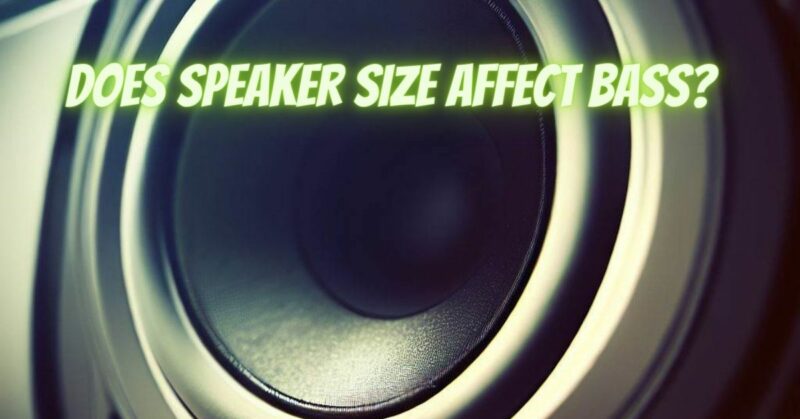When it comes to audio systems and their ability to deliver deep, resonant bass, the size of the speakers often sparks debate and curiosity. The question frequently asked is, “Does speaker size affect bass?” In this article, we will explore the connection between speaker size and bass performance, helping you understand the nuances of this critical element in your audio setup.
The Role of Speakers in Bass Production
Before we dive into the impact of speaker size, it’s essential to establish a foundational understanding of speakers and their role in reproducing bass:
- Frequency Range: Speakers are designed to reproduce a wide range of frequencies, from the high-pitched treble to the low-frequency bass. Bass speakers, in particular, are specialized drivers focused on the lower end of the spectrum.
- Woofer vs. Tweeter: Within a speaker system, woofers are responsible for handling low-frequency sound, while tweeters excel at reproducing high-frequency sound. Woofers come in various sizes, each with its own characteristics.
The Impact of Speaker Size on Bass
Speaker size can significantly influence bass performance. Here’s how different speaker sizes affect the reproduction of low-frequency sound:
- Small Speakers (5-6 inches):
- These speakers are typically better suited for mid-range frequencies and higher notes. While they can produce bass, it may lack the depth and punch associated with larger speakers.
- Smaller speakers are often used in compact audio systems or as part of a multi-driver setup, where their size complements the other drivers.
- Medium Speakers (8-10 inches):
- Medium-sized speakers strike a balance between handling mid-range and bass frequencies. They offer versatility and can provide a satisfying bass response, especially in smaller rooms.
- Medium-sized woofers are commonly used in bookshelf and floor-standing speakers for home audio systems.
- Large Speakers (12 inches and above):
- Larger speakers, equipped with 12-inch or larger woofers, excel at producing deep and resonant bass. They can move more air, resulting in a more powerful and room-filling bass performance.
- Large woofers are commonly found in dedicated subwoofers, which are designed exclusively for reproducing low-frequency sound.
Choosing the Right Speaker Size for Bass
Selecting the best speaker size for bass depends on several factors:
- Room Size: Consider the dimensions of your listening space. Smaller rooms may benefit from the precision and agility of smaller speakers, while larger rooms may require the depth and power of larger ones.
- Music and Content: Think about the type of content you primarily enjoy. Smaller speakers can excel in certain music genres, while larger ones are better suited for bass-heavy movies and gaming.
- Budget and Space: Evaluate your budget and available space. Smaller speakers often offer cost-effective solutions for those with limited room or financial constraints.
Subwoofers: Dedicated Bass Power
For those who prioritize deep, room-shaking bass, a dedicated subwoofer is often the best solution. Subwoofers are specialized speakers designed solely for reproducing low-frequency sound. They come in various sizes, with larger subwoofers (15 inches and above) providing the most powerful and resonant bass experiences.
Speaker size indeed affects bass performance, but it’s only one piece of the puzzle. Achieving optimal bass quality in your audio system involves a complex interplay of factors, including room size, speaker design, and content type. Smaller speakers can deliver excellent sound quality in many scenarios, but larger speakers, especially dedicated subwoofers, offer the depth and power necessary for an immersive bass experience. Ultimately, the choice of speaker size should align with your individual needs and the type of audio experience you wish to achieve, striking the right balance between size and sound quality.


